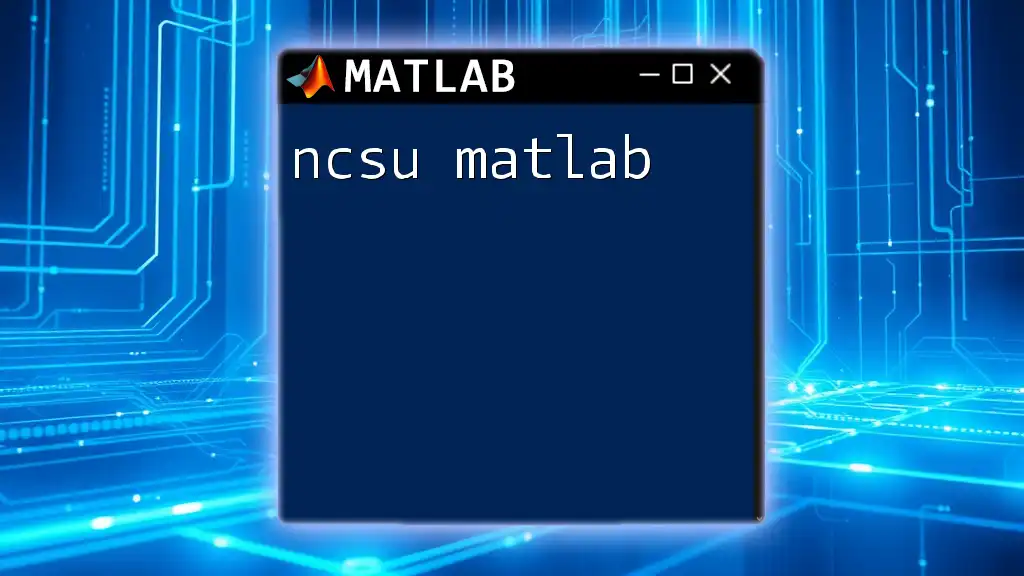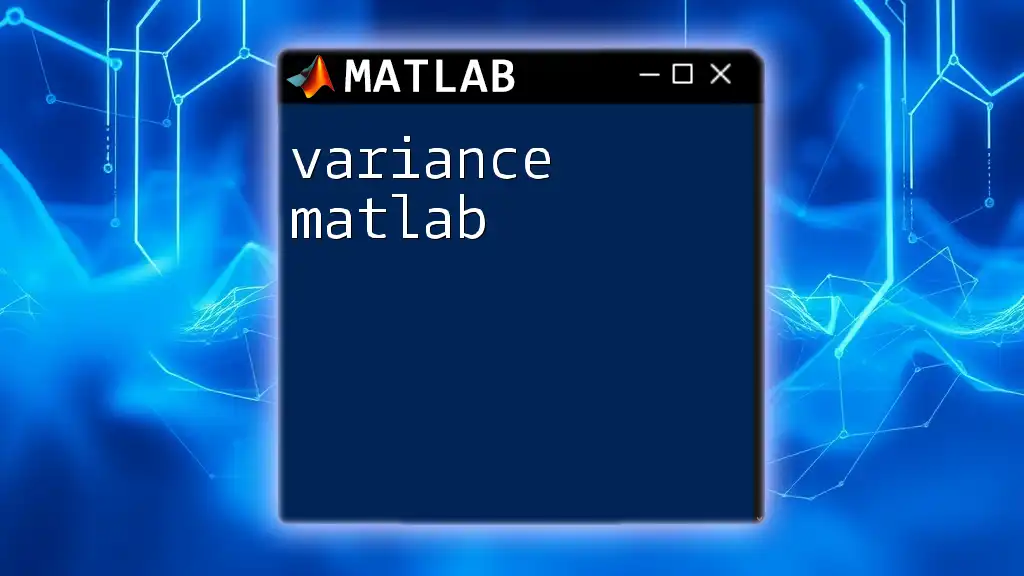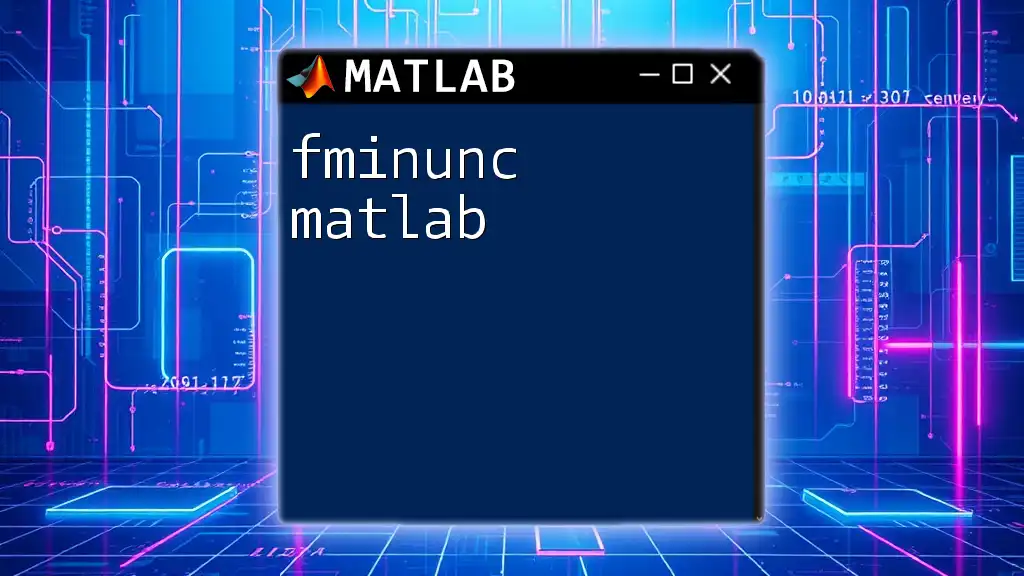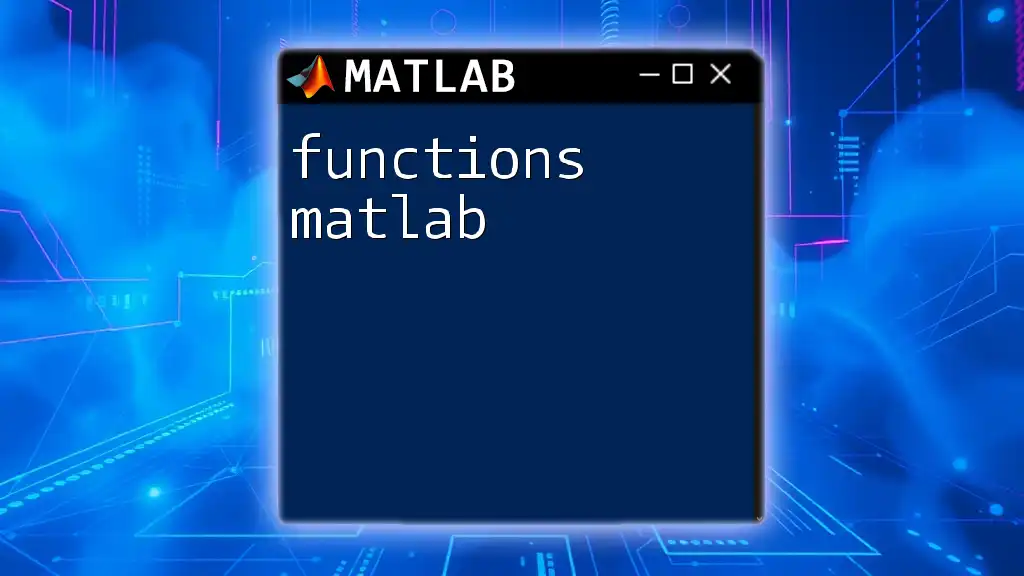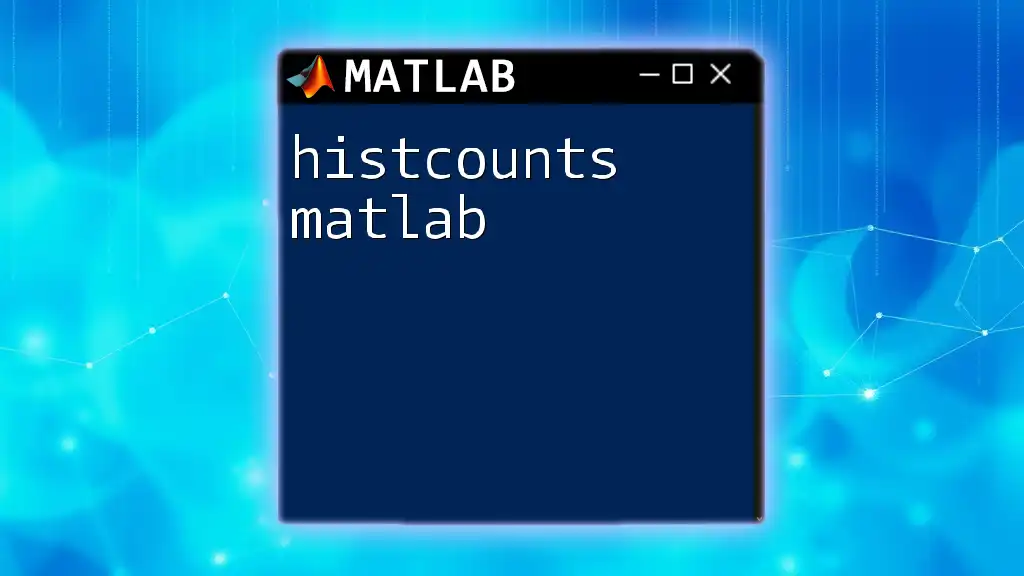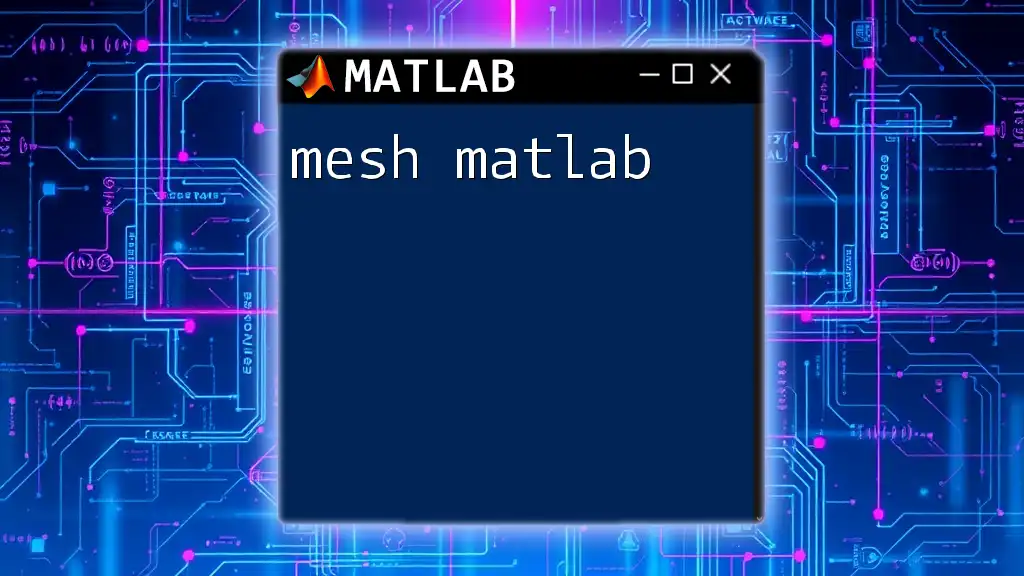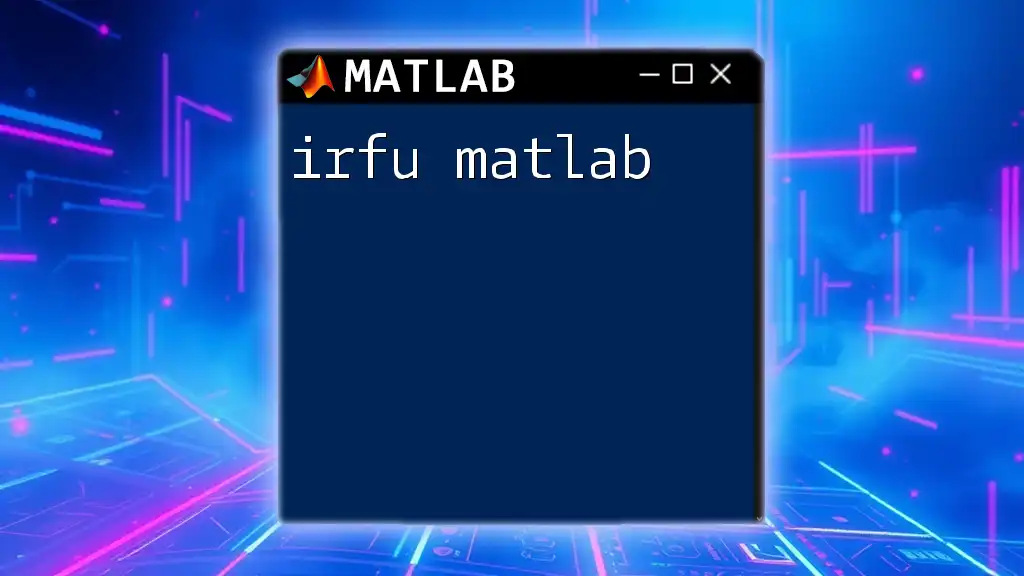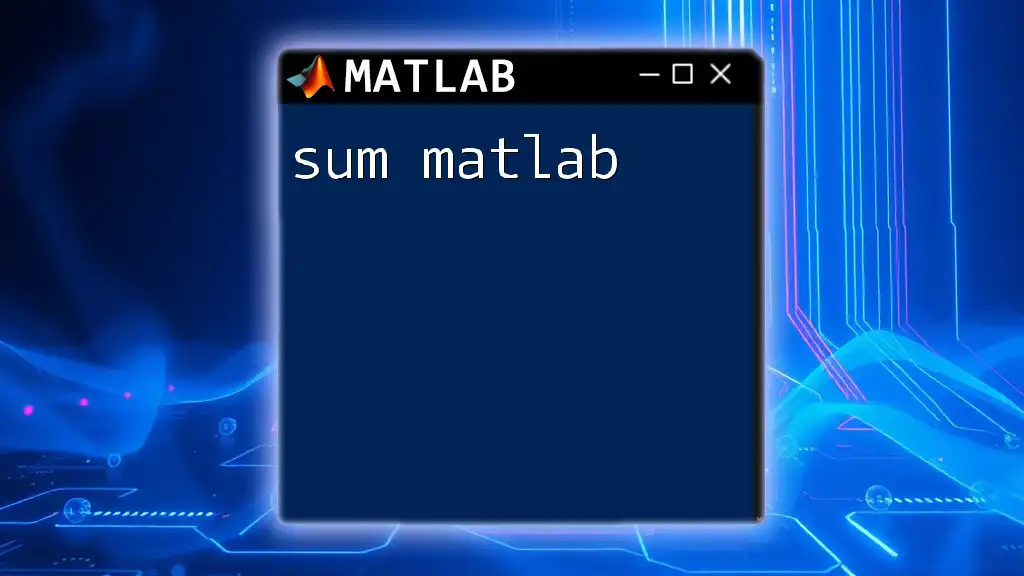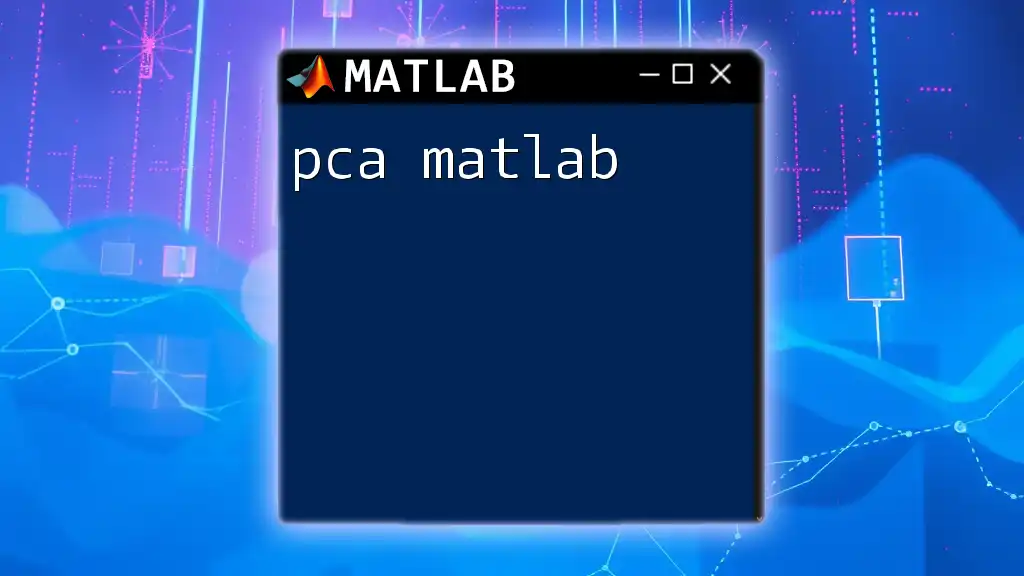"NCSU (North Carolina State University) MATLAB refers to resources, tools, and command usage focused on helping students and researchers at NCSU utilize MATLAB for their academic and research needs."
Here’s a simple MATLAB code snippet to plot a sine function:
x = 0:0.1:10; % Generate values from 0 to 10 with a step of 0.1
y = sin(x); % Compute the sine of each x value
plot(x, y); % Create a plot of y vs. x
title('Sine Function'); % Add a title to the plot
xlabel('X-values'); % Label the x-axis
ylabel('Sine of X'); % Label the y-axis
Getting Started with MATLAB
What is MATLAB?
MATLAB is a high-level programming language and interactive environment designed for numerical computation, visualization, and programming. It enables users to explore and manipulate data, perform complex mathematical calculations, and create algorithms for a variety of applications.
One of the key benefits of using MATLAB at NCSU is its powerful tools and built-in functions that streamline tasks in various domains such as engineering, data analysis, signal processing, and machine learning. With a rich set of libraries, MATLAB is indispensable for students and researchers looking to tackle complex problems efficiently.
Installing MATLAB at NCSU
Accessing MATLAB at NCSU is straightforward. Students and faculty can download and install MATLAB from the MathWorks website using their NCSU credentials. NCSU offers licenses that allow users to install MATLAB on their personal devices at no extra cost.
Additionally, for those who prefer to work in a web browser, MATLAB Online is available. It offers most features of the desktop version, making it convenient to access for quick tasks or collaborative work.
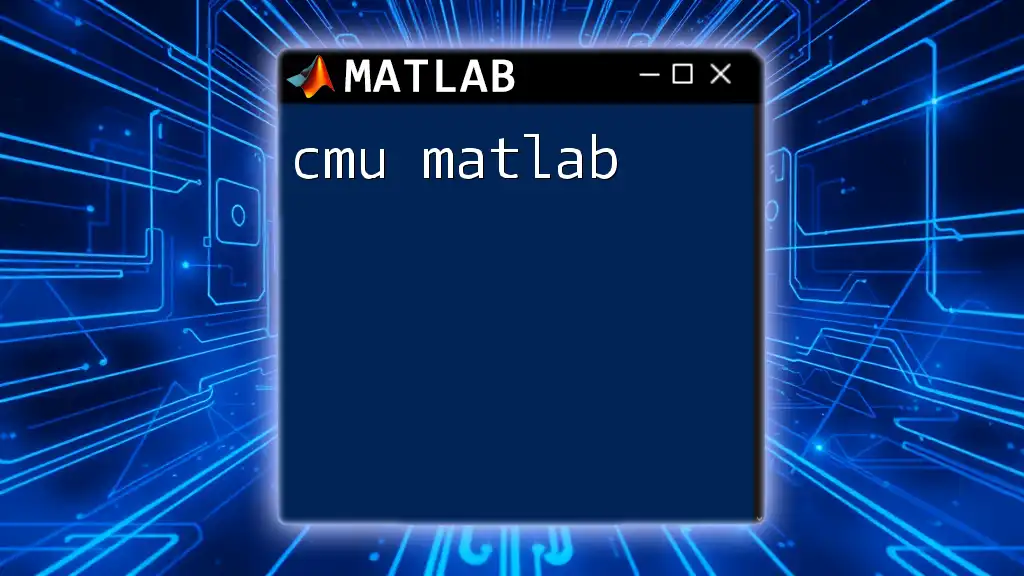
Key Features of MATLAB
User Interface
When users first open MATLAB, they are greeted with a sleek and functional interface that consists of several components, primarily the Command Window, Workspace, Command History, and Editor.
Navigating through these components is essential:
- Command Window: Where you can execute commands and view outputs.
- Workspace: Displays the variables currently in memory, making it easier to manage data.
- Command History: Records previously entered commands for easy access.
- Editor: An integrated code editor for writing scripts and functions.
Personalizing this environment can enhance efficiency. Users can customize preferences, including font size, color schemes, and layout options, to suit their preferences.
Essential Commands
Familiarity with basic commands is crucial. Here are some of the foundational commands that every NCSU MATLAB user should know:
Run the following example to clear the workspace and command window:
clc; % Clears the command window
clear; % Clears all variables from the workspace
close all; % Closes all figure windows
These commands help maintain a clean working environment, avoiding clutter and confusion as you code.
Working with Variables and Data
Variables in MATLAB
Variables are essential for storing data in MATLAB. Creating and modifying them is simple:
You can define a numeric variable as follows:
a = 5; % Numeric variable
For text-based data, use character arrays:
str = 'Hello World'; % Character variable
Understanding data types is crucial, as they define the actions you can perform. MATLAB supports various types of data, which include numeric arrays, character arrays, structures, and cell arrays.
Data Types
Working with matrices is a fundamental feature of MATLAB. For instance, the following code snippet demonstrates how to create a 2D matrix and a cell array:
A = [1, 2, 3; 4, 5, 6]; % 2D matrix
C = {1, 'text', rand(3)}; % Cell array
Understanding these types will aid in effective data manipulation and storage in your projects.
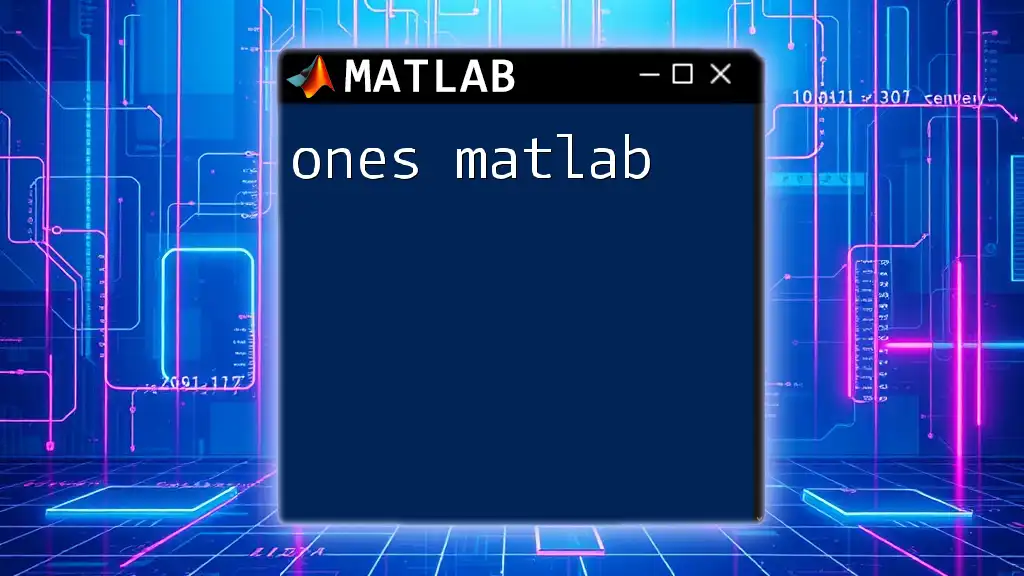
Data Visualization Techniques
Plotting Basics
Data visualization is one of MATLAB's strengths. Creating basic plots can be achieved using the `plot` command, a fundamental tool for visualizing data trends.
Below is an example of how to create a simple 2D plot of a sine wave:
x = 0:0.1:10; % X-axis data
y = sin(x); % Y-axis data
plot(x, y); % Create a plot
title('Sine Wave');
xlabel('X-axis');
ylabel('Y-axis');
This code creates a clear sine wave graph with labeled axes, which is essential for data presentation.
Advanced Visualization
For more complex analyses, the `subplot` function allows you to display multiple plots in a single figure, showcasing different datasets together.
Here’s an example demonstrating how to utilize subplots:
subplot(2,1,1); % First subplot
plot(x, y);
title('Sine Wave');
subplot(2,1,2); % Second subplot
plot(x, cos(x));
title('Cosine Wave');
This code arranges the sine and cosine plots vertically, making comparative analysis intuitive and visually appealing.

MATLAB in Research at NCSU
Common Applications of MATLAB
At NCSU, MATLAB is widely utilized in various research fields. It has proven to be invaluable in domains such as engineering, biology, physics, and social sciences. Researchers appreciate MATLAB’s vast libraries and tools for simulation, algorithm development, and data analysis.
Case Studies
Notable projects at NCSU demonstrate the effectiveness of MATLAB. For example, engineering students employ MATLAB for signal processing applications, while researchers in life sciences use it for analyzing genetic data. These applications not only underline the versatility of MATLAB but also its ability to drive research innovation at NCSU.

Tips for Efficient MATLAB Usage
Shortcuts and Best Practices
To boost productivity, here are some key keyboard shortcuts helpful for every MATLAB user:
- Ctrl + Shift + B: Build the current file.
- F5: Run the current script.
- Ctrl + R: Comment selected lines.
Debugging Techniques
Encountering errors is common during the coding process. MATLAB provides several strategies for debugging:
- Utilize breakpoints within the script editor to pause execution and analyze variable states.
- Employ the `disp()` function to output variable values at different execution stages, helping identify issues.
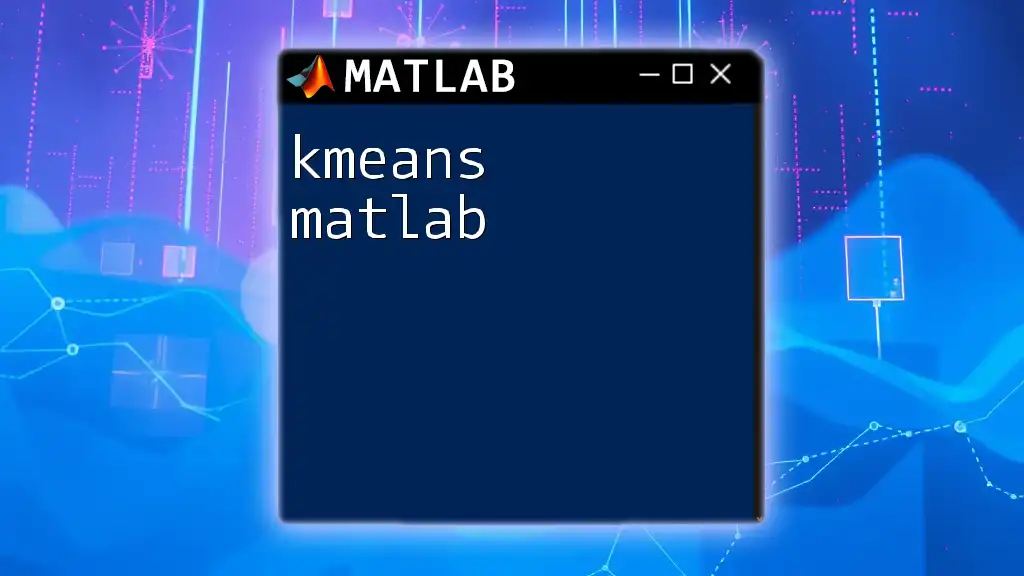
Conclusion
In summary, mastering NCSU MATLAB requires understanding its extensive features, commands, and applications. The knowledge you gain will empower you to analyze problems, visualize data, and contribute significantly to research efforts.
The more you practice and engage with MATLAB’s tools, the more proficient you will become. Explore the resources available at NCSU, engage with the MATLAB community, and continue expanding your skills in this powerful computing environment.
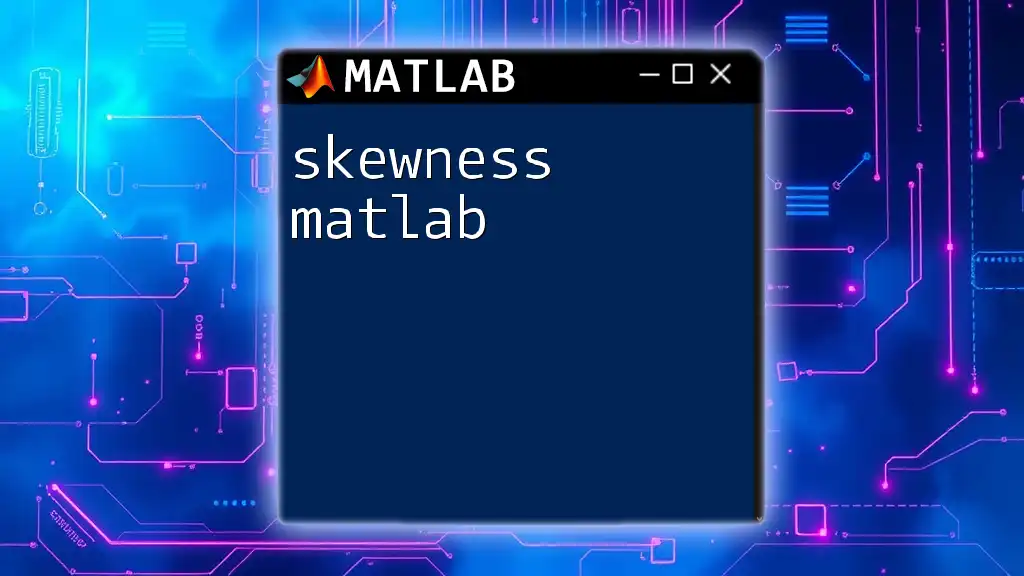
Additional Resources
Learning Materials
For further learning, consider exploring recommended books, online courses, and tutorials specifically tailored toward MATLAB usage, which can enhance your understanding and application of the software.
Community and Support
Lastly, connect with the NCSU MATLAB community through forums, workshops, and study groups. This network offers invaluable support, allows for collaboration, and enriches the learning experience as you navigate MATLAB’s capabilities.

